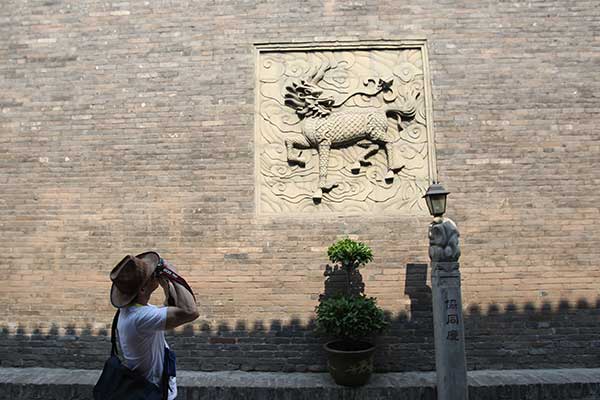 |
|
Pingyao ancient town in Shanxi province.[Photo by Wang Zhuangfei] |
The Five Tan Yao caves (Caves 16-20) house huge statues of five emperors of the Northern Wei Dynasty represented as Buddhas. Li Jing, our dedicated local guide, told me a little of their gritty history. The story of Emperor Taiwu (AD 408-452) particularly interested me. He was a devout Taoist who tried to abolish Buddhism.
When he died, his son asked Tan Yao to construct Taiwu’s image in Buddhist guise, decorated with a thousand Buddha designs, to represent the Buddhist monks he had killed. Looking at the beautiful 15-meter high statue, I was fascinated by how much time and effort had been put into making a mockery of an emperor that broke with tradition.
In the Five Color Caves, I read the story of the Buddha from images of daily life and rich imperial scenes. There were dancers and teachers, monks and concubines, farmers and lords. The vivid carvings of those scenes had spiritual charm and Lovecraftian grandeur. I asked myself: Do I take photos or do I simply look? How do I describe this to my friends? How do I tear myself away?
The Yungang Grottoes are a masterpiece, a spiritual haven in the dry Wuzhou Mountains. I was awed by the intricacy of the stone structures, the workmanship of the carvers, the expressive Buddha faces, and the ages that they had survived through. I stood looking at each cave for far longer than I realized.
The thousands of carved Buddhas were resilient and quietly smiled at me with encouragement, as if to say "This is what humanity can do. This is what you can do."